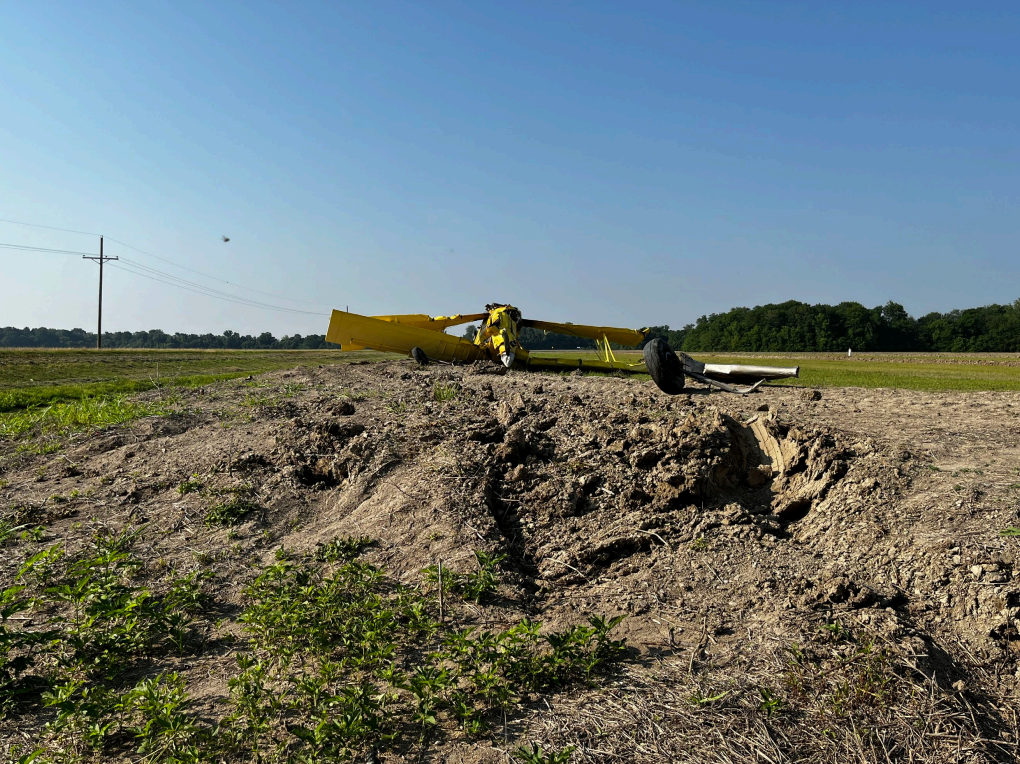
ASN Wikibase Occurrence # 314723
This information is added by users of ASN. Neither ASN nor the Flight Safety Foundation are responsible for the completeness or correctness of this information.
If you feel this information is incomplete or incorrect, you can submit corrected information.
| Date: | Wednesday 31 May 2023 |
| Time: | 17:30 |
| Type: |  Grumman G-164B Turbo Ag-Cat |
| Owner/operator: | MJ Aviation Inc |
| Registration: | N8405K |
| MSN: | 688B |
| Year of manufacture: | 1982 |
| Total airframe hrs: | 12146 hours |
| Engine model: | Pratt & Whitney Canada PT6A-34AG |
| Fatalities: | Fatalities: 0 / Occupants: 1 |
| Aircraft damage: | Substantial |
| Category: | Accident |
| Location: | Saffell, AR -
 United States of America United States of America
|
| Phase: | Take off |
| Nature: | Private |
| Departure airport: | Saffell, AR |
| Saffell, AR | |
| Investigating agency: | NTSB |
| Confidence Rating: |
On May 31, 2023, at about 1730 local time, a Grumman-Schweizer G-164B Ag-Cat Turbine, N8405K, was substantially damaged when it was involved in an accident near Saffell, Arkansas. The commercial pilot was not injured. The local aerial application flight originated from a private airstrip.
The pilot reported that shortly after takeoff on an aerial application flight to apply fertilizer to rice fields in a remote area the airplane unknowingly flew through a dust devil (also called a whirlwind), and subsequently lost lift.
The pilot estimated the dust devil was between 8 to 10 ft in diameter and reported no visible debris. The airplane subsequently impacted a dirt ditch, nosed over, and came to rest inverted. The pilot was able to egress from the airplane without further incident. The airplane sustained substantial damage to the engine mount, the fuselage, both wings, and the empennage.
The operator reported there were no preimpact mechanical malfunctions or failures with the airframe or the engine that would have precluded normal operation. The pilot reported that he had encountered several dust devils in earlier flights that day for the operating area. The pilot did not perform a hopper load dump during the accident sequence, as he reported flying the airplane was the priority. A review of the Federal Aviation Administration Aviation (FAA) Weather Handbook (FAA-H-8083-28) and the FAA Aeronautical Information Manual found no detailed information listed about dust devils or the potential hazards of flying through dust devils.
Probable Cause: The airplane’s encounter with a dust devil after takeoff, which resulted in a loss of lift, and a subsequent loss of control. Contributing to the accident was the presence of a dust devil in the airplane’s flight path.
Accident investigation:
 |
|
Sources:
NTSB
FAA
https://registry.faa.gov/AircraftInquiry/Search/NNumberResult?nNumberTxt=N8405K
https://live.staticflickr.com/65535/51314296649_7b709db20f_z.jpg (photo)
Location
Images:


Revision history:
| Date/time | Contributor | Updates |
|---|---|---|
| 03-Jun-2023 09:52 | AgOps | Added |
| 07-Jun-2023 10:15 | Captain Adam | Updated |
| 10-Jul-2023 13:12 | Captain Adam | Updated |
Corrections or additions? ... Edit this accident description
The Aviation Safety Network is an exclusive service provided by:


 ©2024 Flight Safety Foundation
©2024 Flight Safety Foundation